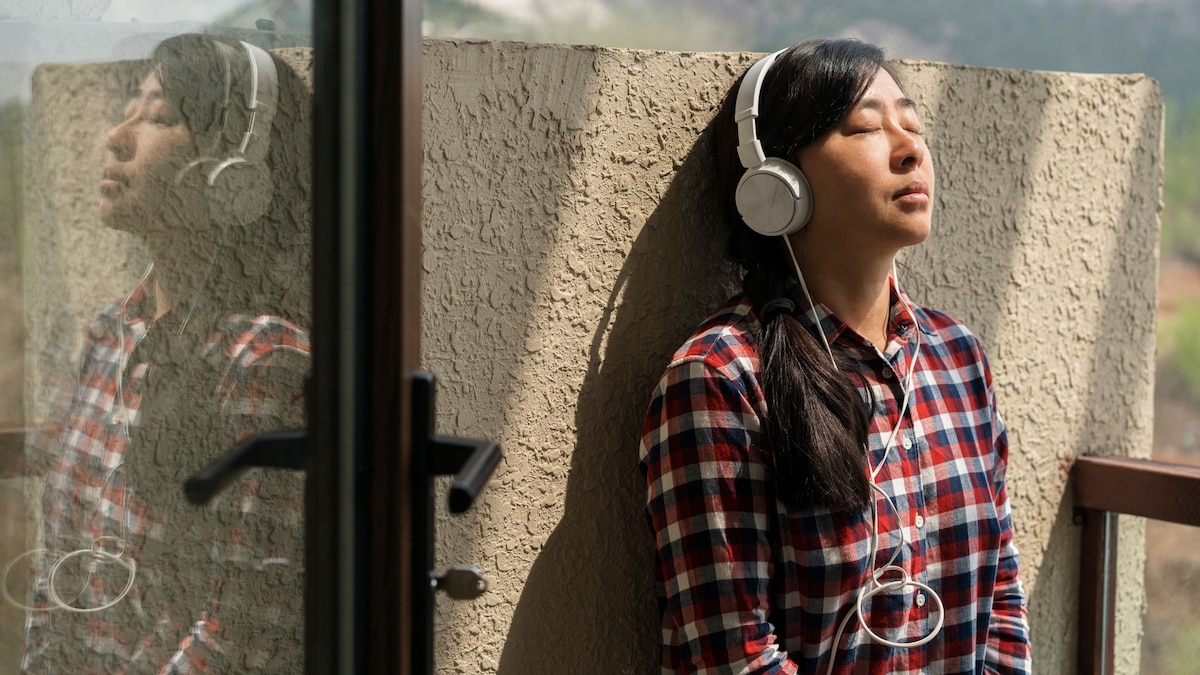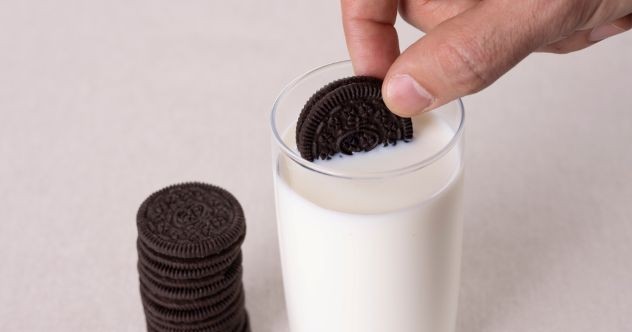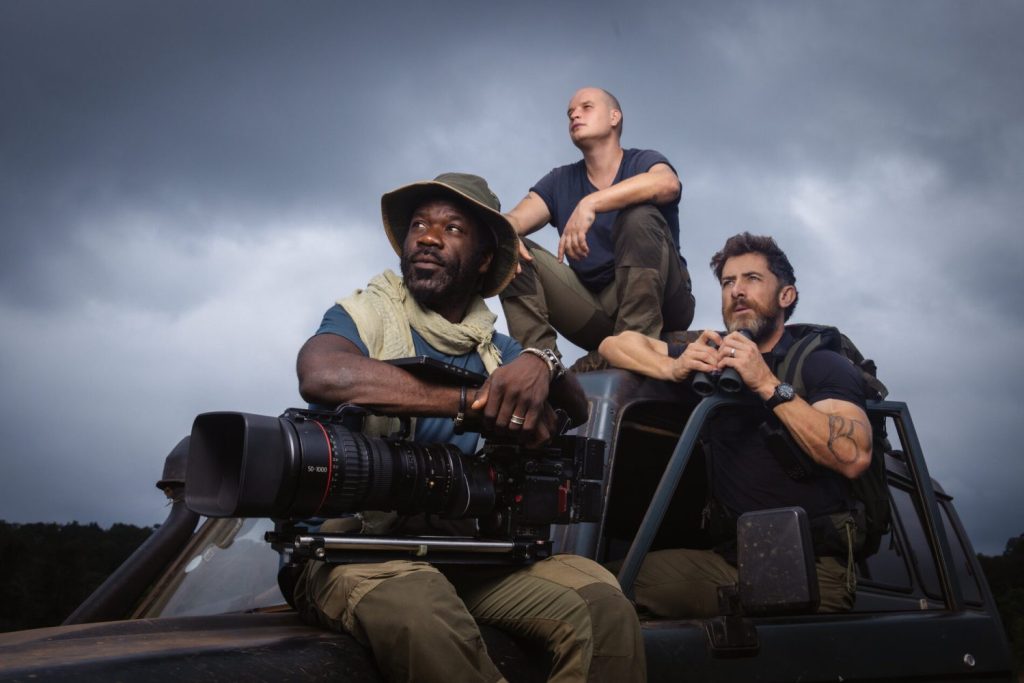Now Reading: The best travel anxiety gear for 2025
-
01
The best travel anxiety gear for 2025
The best travel anxiety gear for 2025

By clicking on the featured links, visitors will leave nationalgeographic.com and be directed to third-party e-commerce sites that operate under different terms and privacy policies. As a participant in multiple affiliate marketing programs, National Geographic will earn a commission for certain purchases. See full disclaimer below.*
Travel can be exhilarating, but with so many moving parts and unpredictable factors, it can also be a major source of stress and anxiety. Navigating unfamiliar airports, managing time zone shifts, and adjusting to new surroundings take its toll. As a longtime travel writer, I’ve tested plenty of tools to help manage my nerves.
To find the best travel gear for anxiety, I spoke with seasoned travelers and mental health professionals for their advice. Whether you’re prone to motion sickness, noise sensitivity, or general overstimulation, these 12 products may help make travel feel more manageable. But remember to check with your physician before you try anything new, especially if you have specific health concerns.
When you’re feeling stressed or anxious while traveling, having products that evoke familiar surroundings is key. “Each sense that is overwhelmed needs a small band-aid to assist in bringing the nervous system back to a non-overload level,” explains Jason Kellogg, a psychiatrist and medical director at Progeny Psychiatric Clinic in Southern California.
There are many products that claim to help calm nerves stemming from travel. The best products are portable, practical, and target specific anxiety triggers. Here are some that I’ve used and a few more that have helped other travel pros I talked to.
Wearable nausea relief: Reliefband Premier
Angela Cruz Ledford, a Florida-based former broadcast news anchor turned blogger, always travels with her ReliefBand. She says she likes the discreet wearable—which is hypoallergenic and rechargeable—because most motion sickness medications make her sleepy.
“This is a pricey investment, but I swear by it,” says Ledford. “When I start to feel the motion sickness on an ascent or descent, I turn it on, and it takes away the feeling.”
(What causes motion sickness, and how can you prevent it?)
White noise machine: Drift Away by Ergopouch
Leah Kaylor, a licensed psychologist and certified therapist based in Louisiana, recommends creating “a bedtime routine that mirrors your home” to increase comfort in unfamiliar settings. A white noise machine can help maintain this routine while traveling and mask noisy hotel neighbors or traffic.
I’ve used this compact machine on my own travels. It’s small enough to throw into a backpack or carry-on and has seven soothing tracks, three light settings, and a 48-hour battery life on a single charge.
Breathing necklace: The Classic Shift by Komuso
According to Harvard Health, controlled breathing techniques can help regulate the body’s stress response and promote calmness. Created by a psychotherapist, this minimalist necklace is designed to help extend your exhale to eight to 10 seconds. It’s made from durable surgical-grade steel and HSA/FSA-eligible.
Light therapy lamp: Verilux Happylight Mini
Kaylor says light therapy helps reset the body’s internal clock and reduce the fatigue often associated with jet lag.
“I use light box therapy every morning, and it’s been a game-changer,” she says. “For those who travel across time zones and battle jet lag, a light box can help you adjust quickly to your new time zone.”
Roughly the size of an iPad Mini, this white light lamp has three settings that mimic sunlight, according to the brand. We also like that it adjusts 90 degrees, has a timer, and is slim enough to fit nicely into a travel bag.
Tactile stress relief: Therapy Dough from Elseware Unplug
This dough helps provide tactile stimulation for restless hands. It’s made of essential oils and vegetable pigments in portable, TSA-friendly tins. We like that the scent isn’t overpowering.
“Sensory squish toys are another great option because they allow your body to release anxiety that is building,” says New York-based Brianna Paruolo, a licensed psychotherapist in private practice. “This can also help [with grounding you] by synchronizing taking belly breaths or box breathing for regulation as you squeeze the toy.”
(Here are 7 ways to make travel less stressful)
Sleep mask: Manta Sleep Mask Pro
Travel often means unpredictable lighting, from overhead fluorescents on planes to streetlights near hotel windows and the midnight sun in the Arctic. Kaylor says she loves the Manta Sleep Mask for travel. “The adjustable band ensures a perfect fit for everyone. But the real MVP here? The deep eye sockets,” she says. The mask “is like a personal blackout curtain for your eyes. I use it every single night and never travel without it.”
We like that you can adjust the width of the eye sockets and stash the mask in the included case.
Noise protection earbuds: Curvd Everyday Earplugs
Sometimes you need a pair of low-tech earplugs to block sound so you can sleep or tone down overstimulating crowd noise without losing situational awareness.
“What sets them apart is the inclusion of various sizes, ensuring a perfect fit for every user. I own multiple pairs and rely on them nightly for better sleep,” says Kaylor about the Curved Everyday Earplugs.
They come with a carrying case and a carabiner so you can attach them to your key ring or a loop in your travel bag. We also love all the different colors, including a soft lilac, basic black, and cream.
Noise-canceling headphones: Bose QuietComfort
“One of the biggest triggers for travel anxiety is sensory overload,” says Jenny Maenpaa, a New York-based licensed clinical social worker. She says a comfortable pair of noise-canceling headphones can help create a sense of calm.
Bose QuietComfort is one of our favorite noise-canceling headphones—it’s made a few of our lists. The over-ear design blocks passive noise, while the active noise cancellation technology targets low-frequency sounds, like airplane engines and air conditioning systems. With up to 24 hours of battery life, according to the brand, they should last through long-haul international flights.
Sleep aid wearable: TouchPoints for Sleep
TouchPoints are wearable devices that use gentle, alternating vibrations in a technique called bilateral alternating stimulation tactile (BLAST) to help calm your nerves. The company says it developed its products over several decades with neuropsychologists.
A 2018 study of over 1,100 participants shows that just 30 seconds of BLAST technology reduced emotional stress by 62 percent and bodily distress by 50 percent.
TouchPoint says its devices can help you fall asleep and reduce wakefulness during the night. They come with a built-in timer and can be worn on the wrists or ankles.
Phone restriction tool: Brick Phone App Blocker
This minimalist phone interface temporarily removes distracting apps and notifications, reducing overstimulation with a tap. Unlike phone apps that block access, the Brick is a physical object that you have to tap with your phone to deactivate.
I use the Brick during my travels to block certain apps without restricting crucial ones, such as maps or messaging. For travelers whose anxiety gets worse due to constant email or social media notifications, this digital boundary may help provide relief.
Weighted plush toy: Bumpas
“If you find comfort in weighted blankets at home, a travel-sized version can help ease anxiety on the go,” says Legere. “The gentle pressure can be soothing, making it easier to relax during flights, long car rides, or even while waiting at the airport.”
If you can’t pack a weighted travel blanket, you could try a Bumpas. These weighted stuffed toys mimic the feeling of getting a hug. It’s small enough to travel with, but there’s enough weight in the arms to feel the soothing pressure.
(A cozy travel blanket is the little luxury that packs a punch)
How we chose the best travel anxiety items
We rigorously evaluated dozens of products that claim to help ease anxiety while traveling. In making our final list, we prioritized effectiveness, portability, and expert advice:
• Third-party reviews: We consulted verified user reviews on retailer sites and travel forums to evaluate real-world performance.
• Brand reputation: We favored companies with a strong record in wellness, sleep science, or travel accessories.
• Expert insight: We interviewed licensed mental health professionals to better understand the science behind each product’s impact.
• Portability: We prioritized compact, TSA-compliant tools suited for carry-on travel.
• Personal testing: I have tried many of these products on my own trips as a longtime travel journalist reporting from around the world.
Tips for buying travel anxiety gear
Many products claim to ease stress and anxiety while traveling. Not all are as effective as they seem and many are expensive. Before handing over your hard-earned cash, consider these tips and consult your doctor, especially if you have specific health concerns.
Focus on your triggers
Start with your primary triggers. Do loud noises bother you? A pair of noise-canceling headphones, like the Bose QuietComfort, or earplugs, such as the Curvd Everyday Earplugs, may help. Prone to restlessness? Try sensory tools like Therapy Dough from Elseware Unplug or the The Classic Shift by Komuso breathing necklace.
Test products before your trip
Trying new anxiety tools for the first time during travel can create additional stress if they don’t work as expected. Maenpaa recommends testing products at home first. “Object-association strategies used for stressed minds and bodies can be continued across most situations to regulate environmental stress,” she says. This pre-trip testing allows you to develop familiarity with the tool, making it more effective when you need it most.
Layer your approaches
Don’t rely on a single product to manage all aspects of travel anxiety. “Each sense that is overwhelmed needs a small band aid to assist in bringing the nervous system back to a non-overload level,” says Kellogg. Consider creating a personalized kit that addresses multiple sensory concerns—perhaps combining noise-canceling headphones, a sleep mask, and a tactile comfort item, like Therapy Dough from Elseware Unplug.
Prioritize familiarity
“The olfactory system is a key player regarding the connection to stimuli and feelings,” says Kellogg. “Find a consistent, home-based scent that will comfort the nervous system, associate the mind with comfort feelings, and stop the stress responses in their tracks.” This might be a small lavender sachet, a travel-sized blanket with a familiar scent, or even a favorite lip balm.
Frequently asked questions
How do I stop being anxious about traveling?
Consider developing a travel routine incorporating preparation, comfort, and anxiety management techniques. “Be kind to yourself,” says Maenpaa. “If your anxiety feels overwhelming, consider talking to a therapist about strategies tailored to you.”
Simple practices like deep breathing exercises, progressive muscle relaxation, and creating a detailed itinerary may also help reduce anxiety related to uncertainty.
(Afraid of flying? Here are 7 ways to help manage your anxiety)
What to buy for plane anxiety?
For flight-specific anxiety, consider products that address the unique stressors of air travel: noise-canceling headphones to block engine noise, a Reliefband for motion sickness, compression socks for circulation, and a quality sleep mask for rest. Legere even recommends “a tablet with downloaded movies, audiobooks, or playlists. Having entertainment ready to go can make a huge difference when you’re feeling anxious while traveling.”
(Here’s how to get through a long flight)
References
*Although we are sharing our personal opinions of these experiences or products with you, National Geographic is not endorsing these experiences or products on behalf of anyone. It has not performed product safety testing on any of these products, did not manufacture them, and is not selling, or distributing them and is not making any representations about the safety or caliber of these products or experiences for individual consumers. Prices and availability are subject to change from the date of publication.























